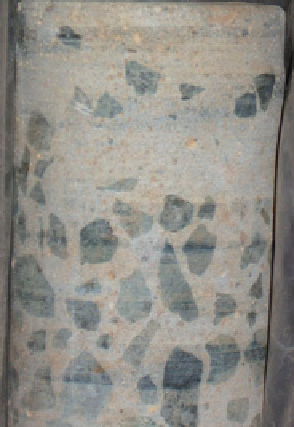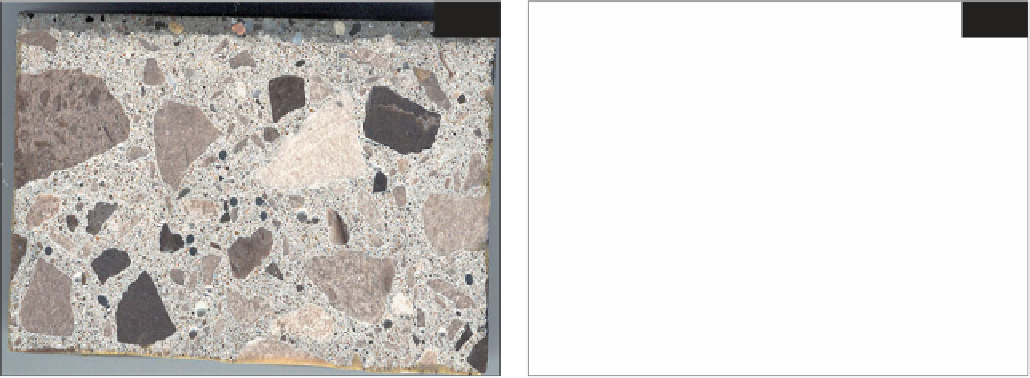Geoscience Reference
In-Depth Information
desired strength and permeability. Failure to control
moisture loss at surfaces promotes bleeding, and along
with exposure to low temperatures, these conditions can
reduce concrete strength and durability. By contrast,
excessively high curing temperatures can result in early
thermal cracking and, in some cases, deleterious delayed
ettringite formation (DEF).
One example of concrete finishing is that many
concrete floors are constructed with dry shake surface
finishes to improve abrasion resistance. Dry shake
materials are factory prepared blends of cement, hard
fine aggregate, and sometimes admixture and pigment,
applied dry as a thin layer (2-3 mm) and trowelled into
the fresh concrete base (
191
). Excessive trowelling when
finishing concrete floors can mix dry shake toppings into
the underlying base concrete, reducing their beneficial
effect and giving a different appearance to that intended.
Figure
192
shows an example of this from a warehouse
ground floor slab where the variable appearance of the
dry shake finish was unacceptable to the owner.
189
190
189
Surface of a
concrete core
sample (150 ×
100 mm area)
exhibiting
segregation of
coarse aggregate
(dark grey) from the
cement matrix
(light grey).
190
Concrete exhibiting a bleeding channel (yellow)
running from left to right; PPT, ×35.
191
192
191
Finely ground slice (100 × 75 mm) through the
top of a concrete floor slab, showing the 2-3 mm dry
shake topping (dark grey, upper).
192
Top surface of six 100 mm diameter core samples
taken from a concrete floor slab with a variable dry
shake surface finish.







